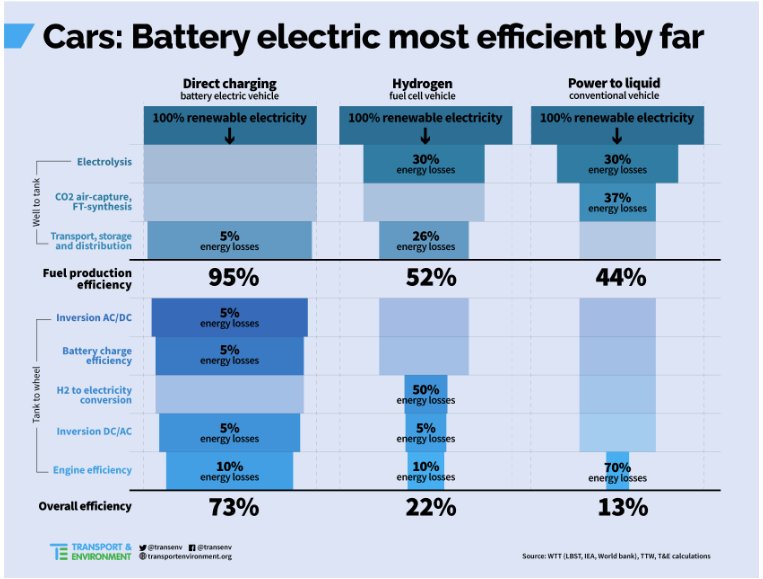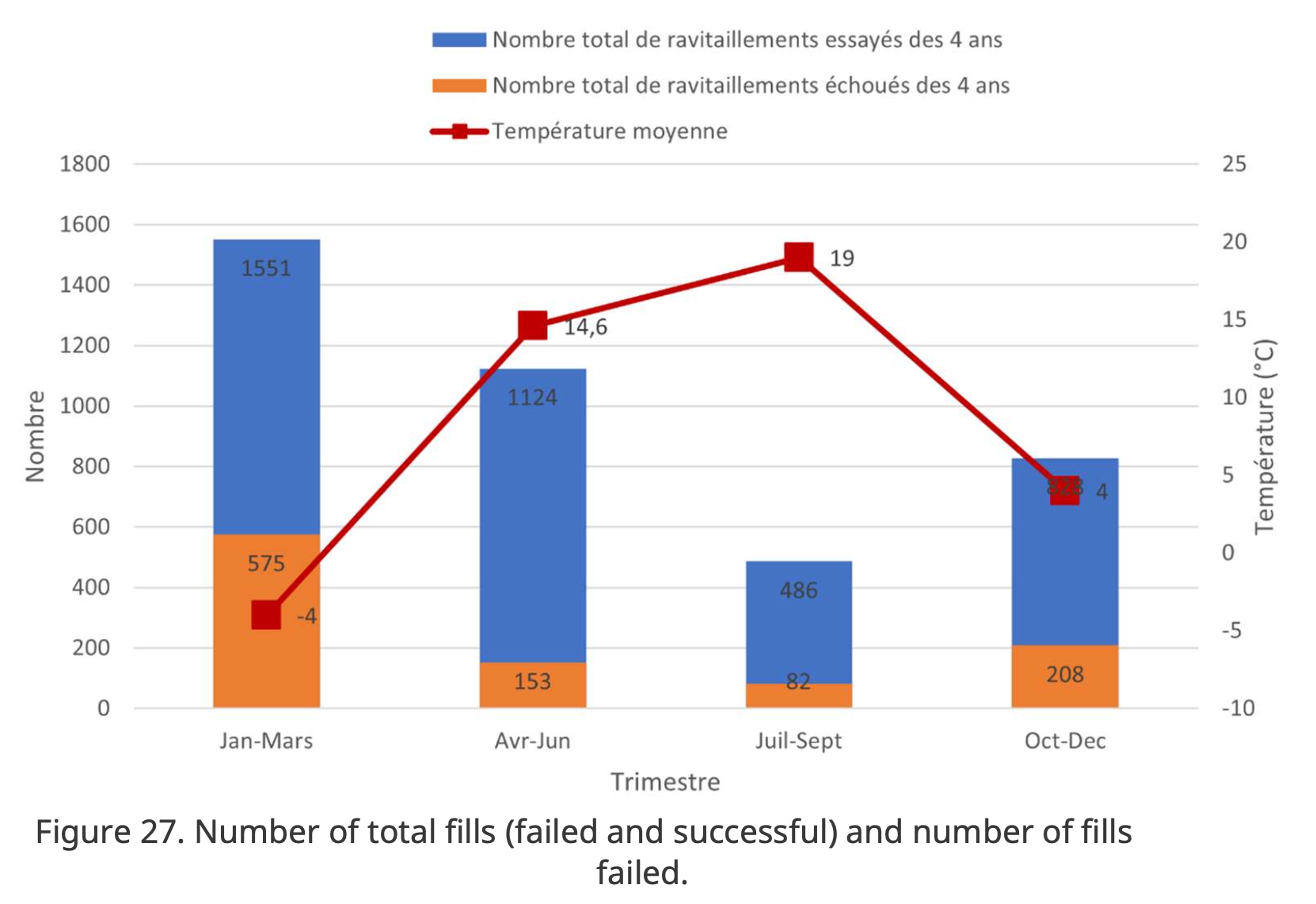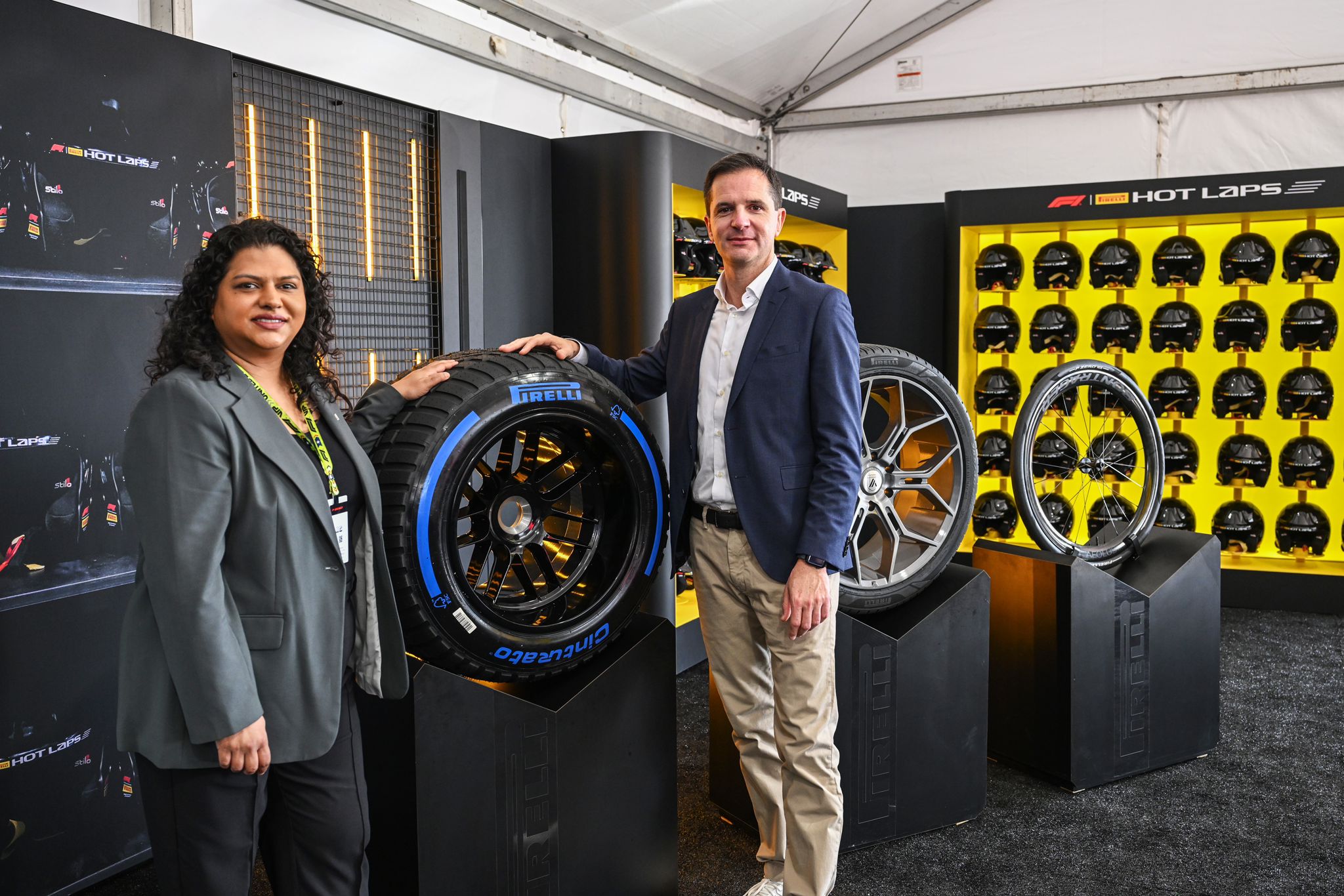Sign up for daily news updates from CleanTechnica on email. Or follow us on Google News!
Is there anything more compelling than free money and supportive guidance from a purported expert organization to a municipal politician? Apparently not, as Mississauga in Canada appears set on joining municipalities around the world in launching a guaranteed-to-fail hydrogen bus pilot. The federal government and the Canadian Urban Transit Research and Innovation Consortium (CUTRIC), are complicit in this impending debacle. This assessment closes with recommendations for Canada, Mississauga and CUTRIC.
Let’s set the stage a bit. The free money is from the Canadian government, which quite sensibly has a $2.75 billion zero emissions transit fund and program to assist municipalities across the country to ditch diesel buses and light rail in favor of transit that doesn’t emit greenhouse gases. (All figures in Canadian dollars.) So far, so good. Change costs money and federal tax dollars assisting with positive change is a very good thing as municipalities were an afterthought in Canada’s constitution, and so despite being the economic engines of the country and holding the vast majority of its population, have very little control or ability to raise money directly. (This is true globally, by the way, and something that really should be redressed.)
However, Canada is a fossil fuel exporting country and as such has a big hydrogen for energy lobby. As a result, bad things happen in the details of good programs. With the fund, one of them is that hydrogen isn’t excluded from the mix, but treated as equal with battery electric as a pathway. The second is this eligibility wording:
“ZEBs are vehicles that have the potential to produce no tailpipe emissions such as battery-electric and hydrogen fuel cell powered vehicles. They may still have a conventional internal combustion engine, but must be able to operate without using it.”
This is a tank to wheel eligibility criteria, not a wind turbine to wheel criteria, and as such it leaves the door wide open for gray hydrogen manufactured directly from fossil fuels, mostly natural gas. Virtually every hydrogen fleet pilot that’s operated in the past 25 years of failures and cancellation globally has used unabated gray hydrogen because that’s all that’s available.
Gray hydrogen made from natural gas has emissions of 10 to 12 kilograms of carbon dioxide and methane — CO2e — depending on methane leakage rates. A kilogram of hydrogen is roughly equivalent in energy to a US gallon of diesel, about 3.8 liters.
Diesel buses, with a tank-to-wheel efficiency of about 20-25%, convert only a fraction of the energy in fuel into motion, losing most of it as heat. In contrast, fuel cell buses offer somewhat improved efficiency, ranging from 30-45%, thanks to the direct conversion of hydrogen into electricity with fewer thermal losses. Calling it roughly double the efficiency is sufficient.
Burning 3.8 liters of diesel to move a bus emits about 10 kilograms of CO2e, but remember the efficiency. Fuel cell buses burning unabated gray hydrogen are about 50% less emitting of greenhouse gases than diesel buses.
That’s far from sufficient for an actual climate win, but it is good enough for Canada’s federal zero emission transit fund. Who benefits from that? Certainly not the climate or the transit authorities. Definitely Canada’s fossil fuel industry and hydrogen lobbyists.
By contrast, Mississauga is in Ontario, where the grid carbon intensity is quite low (although rising somewhat with the current provincial government’s policies). Currently, it’s about 40 grams of CO2e per kWh of electricity. Further, battery electric buses are about 80% efficient battery to wheel. There are about 33.33 kWh of energy in a kilogram of hydrogen, so moving the same distance with a battery electric bus as 3.8 liters of diesel would move it would emit about 1.27 kilograms of CO2e, about a quarter of the emissions of the hydrogen buses.
Ontario will, eventually, have an even lower carbon grid when rational electricity policies eventually return to the province. In the neighboring provinces of Manitoba and Quebec, the emissions would be about 0.04 kilograms of CO2e.
The average Mississauga transit bus travels about 70,000 kilometers in a year. The fuel efficiency of a typical diesel transit bus, like those in Mississauga’s MiWay fleet, is generally around 35 to 50 liters per 100 kilometers (L/100 km). That means that they burn about 2,300 liters of diesel annually. That turns into about 6 metric tons of CO2.
For the hydrogen buses, that will still be 3 metric tons. For battery electric buses in Mississauga today, it would be about 0.75 tons. For battery electric buses in the Mississauga of the future, or the Quebec and Manitoba of today, it would be about 0.02 tons.
Well, what about green hydrogen? Let’s ignore the cost and the complete lack of green hydrogen availability for now, and focus on making it in Ontario. One of the key assumptions that has to be made is that whatever electricity carbon intensity is available to hydrogen buses must be available to battery electric buses, and vice versa.

This chart from European organization T&E holds true in Ontario as well. The electricity that would move a battery electric bus 1,000 kilometers would only move a green hydrogen powered bus about 300 kilometers. The emissions from that electricity would be 3.3 times higher too.
Emissions alone are pretty damning for hydrogen for Mississauga buses, but it’s far from the only thing that they should be aware of. The cost of hydrogen fuel cell buses is going to be a lot higher too.
At present in Ontario, the cost of gray hydrogen is around $6-8 delivered but not pumped. That’s the cost of getting a big tanker of it to someplace per kilogram. Hydrogen refueling stations are much more expensive than diesel stations or high-speed electric charging stations. The lowest cost I’ve seen for a single pump facility is about $1.4 million. That cost has to be amortized across the delivered kilograms of hydrogen.
What that means is that hydrogen at public pumps is expensive. In BC, the only place in Canada where there’s more than one hydrogen refueling station after 25 years of pilot programs, hydrogen costs $14.70 per kilogram, artificially cheap due to funding by government and investors trying in vain to create a market. That’s equivalent to about $2.00 per liter of diesel when diesel runs about $1.50 per liter dispensed in Ontario right now. In Europe, hydrogen refueling stations range from $22.50 to $37.00 per kilogram, equivalent to $3-5 per liter of diesel. In California right now, the remaining hydrogen refueling stations after Shell left the business entirely, hydrogen costs have soared as high as $50 per kilogram, equivalent to about $6.60 per liter of diesel.
To look at neighboring Quebec again, they had an instructive result from their pilot project of fuel cell cars for governmental employees in Quebec City. The single pump and associated electrolyzer at the suburban gas station cost $5.2 million. That was sufficient to fuel a single sedan at a time. $3.3 million was funded by the federal and Quebec government. Even with the small number of privately owned hydrogen cars, the total dispensed hydrogen was subsidized by roughly $500 per kilogram over four years, equivalent to $63 per liter of gasoline. It is unsurprising to me that Quebec decided to return all of the hydrogen cars at the end of the four year program and not continue it. This, in fact, is what happens with every hydrogen pilot eventually.
On this note, the Canadian government provides up to 50% of capital costs for transit systems. Between much higher costs of fuel cell buses — Europe can’t get under $900,000 per fuel cell bus while battery electric is under $600,000 per bus —, and the much higher costs of hydrogen fueling stations than electric charging stations, this means that transit agencies will get much more money for making the wrong decision.
That free money, however, may sway the city councillors of Mississauga. Do they care about that cost if it’s not on Mississauga’s budget? Probably not. They should, obviously, but it would never be highest on their priority list if someone else was footing the bill.
But they should care about the next fiscal part of the equation. Hydrogen pumping stations and hydrogen buses are a lot less reliable than diesel pumps and buses, and even less reliable than battery electric charging and buses.

Looking at that Quebec example again, the electrolysis and fueling facility was out of service for repairs and maintenance a full third of the hours over its four years of operation. It was out of service so much, that governmental employees rapidly learned to use whatever other vehicle was available if there was any chance that they had to refuel one of the hydrogen cars. In the winter time — and Mississauga is a winter city too — refueling failed one in every three attempts. Even in the summer time, it failed one in six times.
This is not remotely a unique experience. A year ago, while engaged in a European road freight decarbonization study, I assessed the maintenance downtime of the entire set of 55 hydrogen refueling stations in California. I chose the last six months for which data was available, as at that point the usage was the highest of any period in their history — while only refueling an average of 18 cars per station per day —, the stations would have had bad components replaced and maintenance cycles would have been optimized. The stations were out of service for 2,000 more hours over those six months than the total time they spent dispensing hydrogen.
This isn’t just a lack of reliability, it’s a cost function. Hydrogen refueling stations fail because 300 or 750 atmospheres of pressure is a lot, equivalent to being 3 to 7.5 kilometers underwater, well into the Mariana Trench. This is made worse by hydrogen being such a tiny molecule, so compressor components and seals have to be manufactured to extraordinary tolerances. Further, that degree of compression leads to big swings in temperature which makes them lower reliability as well. Fixing hydrogen pumps that much costs a lot of money.
Hydrogen refueling station reports have been asserting without empirical support that the annual fixed operational cost of maintenance and labor would be about 4% of the capital cost of the refueling stations. California’s and Quebec’s experience makes it clear that it’s well north of 10% and perhaps as high as 30%.
And then there’s bus reliability. Fuel cell buses are much more complex than battery electric. To make a fuel cell bus, make the battery on a battery electric bus smaller, then add thermoregulated tanks for 300 to 750 atmosphere pressure hydrogen. Add surgical suite grade air purifiers because fuel cells need pure air. Add dehumidifiers, heaters and coolers for the air because fuel cells need it bone dry and in a certain temperature range. Add water management systems including heating for winter operation for the emissions of the fuel cell. Add thermal management for hydrogen as it moves out of the high pressure tank and into hydrogen lines and into the fuel cell, because it’s going to change temperature a lot as pressure changes. And make sure all of this fairly delicate kit is well insulated from too much banging around.
The result are buses that are off the road a lot more than diesel buses and a great deal more than battery electric buses. Around the same time as I looked at California’s refueling stations, I looked at California’s hydrogen bus fleets. They were seeing roughly 50% higher maintenance downtime and costs than for their diesel buses, again years into the program when lemons and manufacturing defects should have been cleared, and maintenance optimized. That was roughly double what they were experiencing with battery electric buses.
This is supported by data from the EU’s most recent annual status report for its hydrogen efforts, Historical Analysis of Clean Hydrogen JU Fuel Cell Electric Vehicles, Buses and Refuelling Infrastructure Projects. Digging through that finds that across European fleets, they were not able to get above 20 months of maintenance contracts for hydrogen buses from any vendor. Meanwhile, often the same vendors were offering five year full parts and labor maintenance agreements or eight year full drive train warranties for battery electric buses.
Once again, vehicle maintenance downtime is a cost function. Around the world, hydrogen fleets are out of service so much that transit service is seriously impacted, diesel vehicles have to backfill them much more and costs go through the roof. In the 25 years of hydrogen fleet pilots, there’s never been a different result.
Currently Barcelona is trying to get a fleet of eight or so hydrogen buses fully operational, yet has only managed to get five on the streets at any given time. Madrid has five buses, but they are all rusting hulks as some refrigerant leaked into the fuel cells and turned them into expensive boxes that didn’t do anything. British Columbia’s experience with the Whistler Winter Olympics fleet was so bad that there’s an unspoken rule on all governmental transportation tenders that hydrogen is not considered a viable option. Among other things, BC shipped green hydrogen 4,500 kilometers from Quebec to run their buses and the buses froze up while driving around in the winter time.
Speaking to that point, the other thing that the Quebec report on their hydrogen fleet showed was a 20% loss of range in the winter time. The purported advantage of hydrogen retaining range in the winter time doesn’t show up in the data either.
But I pointed a finger at CUTRIC as well. Why are they complicit? Well, they appear to have been captured by the natural gas and hydrogen lobbies, make claims which the data shows are unsupportable about hydrogen buses and are directly involved with the Mississauga bus initiative, assisting them to roll down a path to transit failure instead of guiding them firmly into battery electric buses.
In CUTRIC’s white paper on the comparison, The Great Debate: Hydrogen Vs. Battery Electric Technology, they make a lot of claims that don’t stand up to scrutiny.
In Myth #1, they make the claim that both battery electric and hydrogen fuel cell buses will save money over their lifetimes. They claim that both have lower fuel costs and lower maintenance costs. This is completely false for hydrogen buses and other hydrogen vehicles, as the data above shows. The costs of the fuel are higher than diesel and much, much higher than electricity. The cost of the maintenance is much higher than for diesel and double that for battery electric. That’s why hydrogen fleets globally are abandoned, and battery electric fleets are growing rapidly.
They cite a CUTRIC study which found a 44% lowering of energy cost per kilometer for battery electric buses, yet made zero reference to costs for hydrogen. As a simple rubric, multiply the costs of energy per kilometer for hydrogen by a factor of three compared to battery electric. That implies about a 70% increase in costs of energy per kilometer for hydrogen buses.
The California and international experiences make it clear that maintenance costs are much higher, even in fleets that have been operating for a handful of years.
In their Moncton case study, they make the perplexing claim with zero data backing it up that hydrogen energy costs would be 30% lower than for diesel. As shown above, this is literally impossible even with gray hydrogen. Whatever numbers CUTRIC has in their models for the costs of hydrogen are clearly artificially low. Real world data from fleets and hydrogen initiatives around the world do not remotely support this finding.
Where do they get this from? They cite Ballard Power Systems as the source of projected low hydrogen costs. For context, this is a firm which has averaged $55 million in losses annually since 2000, a total of $1.3 billion, and has never turned a profit, existing on governmentally funded hydrogen pilots around the world and providing losses to its investors for tax purposes.
What is actually happening with the price of green hydrogen? Boston Consulting Group made it clear what the reality is. They have a data set of about 1,300 green hydrogen projects. In 2023, the average cost per kilogram for green hydrogen manufacturing — not distribution or pumping — in projects which reached final investment decision was $14. They said that the cost people should expect in 2030 was in the $7.50 to $12.00 range. Once again, just making hydrogen, nothing else. Organizations like Mississauga’s transit organization should budget for the high end of that range.
The CUTRIC whitepaper asserts that where grids have high carbon intensity, gray hydrogen may be lower emissions than battery electric vehicles with grid electricity. However, this ignores the global trend for decarbonizing electricity. Battery electric vehicle emissions will plummet, while gray hydrogen will remain fixed and green hydrogen will always be triple those of battery electric.
In their assessment of light rail, they make the claim that Germany’s hydrogen train experiences found 30% higher costs than battery electric or overhead lines. That’s another complete misstatement. Baden-Wurttemberg released a study, which is not remotely hard to recreate, that found that hydrogen would be 80% more expensive for rail, and would no longer be considered. That’s been born out by every hydrogen train experiment in the world. In fact, the European Stadler sales representative is on record as saying that the only time anyone would buy a hydrogen train is if the tender excluded everything except hydrogen.
CUTRIC is supposed to be a reliable source of transit information for Canadian transit organizations. Why is it so badly misrepresenting the reality of hydrogen in transit applications? After all, the founding president and CEO is an electric bus expert, per her official CUTRIC bio.
In 2014, Dr. Petrunic developed Canada’s first methodological framework for an interdisciplinary physics-, mathematics- and economics-based modelling tool. TRiPSIM™, Canada’s first electric bus modelling tool, helps Canadian public fleets determine how zero-emissions vehicles (ZEVs) would operate in their communities and the extent to which they would generate operational savings. Now in its third generation and branded as Rout∑.i™ 2.0, more than two dozen transit agencies in Canada and the United States have relied on it to plan their full-fleet, vehicle- and block-based electrification deployments.
I assume that Rout∑.i™ 2.0 is being used to support these terrible hydrogen numbers, so why are the assumptions so bad? I say this as someone specifically engaged with a team of other European and North American transportation decarbonization exports to assist with the aforementioned European road freight decarbonization study. The reports from Europe and California I cited are publicly available.
Well, that CUTRIC cites Ballard is an indicator. CUTRIC has been infiltrated by fossil fuel and hydrogen for transportation members who are deeply skewing its results. In addition to Ballard, hydrogen-focused members include Fortis Alberta, Fortis BC (both natural gas utilities), e-Mobil BW GMBH (a German mobility organization that also is skewed by very bad hydrogen assumptions), Enbridge (which really wants hydrogen to replace gas in its transmission and distribution pipelines), the energieinsitut (another German hydrogen for energy organization) and the University of Calgary (which focuses on hydrogen due to the fossil fuel industry’s skew in the province).
Regarding Germany, I’ve assessed multiple reports by agencies and German nationals in the country and found consistently that they are starting from deeply unrealistic costs for hydrogen (dena, National Platform for Mobility, Potsdam Institute for Climate Impact Research, ICCT). These are objectively incorrect, not subjectively incorrect and are systemic in nature due to heavy lobbying over a couple of decades.
As a result of internal lobbying at CUTRIC, pushing false lowball assumptions on costs and undoubtedly pressuring CUTRIC to include hydrogen everywhere, CUTRIC’s results on hydrogen are not credible.
Recommendations for Canada
- Change eligibility funding to align with wind turbine to wheel lowest emissions.
- Set funding provisions based on full system emissions reductions per passenger kilometer, not capital cost of solution.
- Review governance that led to tank to wheel as the eligibility requirements.
Recommendations for Mississauga
- The numbers you are basing your decision on are not reliable. Revisit them.
- Reach out to existing hydrogen bus fleet managers, past and present, and get real input of results, including Whistler in BC, Quebec and California transit organizations.
- Engage independent organization or expert to assess CUTRIC’s hydrogen numbers. As a note on this point, a global hydrogen expert is in the GTA, Paul Martin. He’s a chemical process engineer who has worked with hydrogen professionally for decades and is a founding member of the Hydrogen Science Coalition.
- Require CUTRIC to provide strong third-party evidence supporting hydrogen cost assumptions.
- Require CUTRIC to provide strong third-party evidence supporting hydrogen refueling maintenance costs and downtime.
- Require CUTRIC to provide strong third-party evidence supporting hydrogen bus maintenance costs and downtime.
- Redo analyses which led to hydrogen buses being preferred over battery electric.
- Put the acquisition of hydrogen buses on hold until this is complete.
Recommendations for CUTRIC
- Undertake a review to determine how clearly inaccurate information was pushed into CUTRIC models and documents by unreliable members.
- Undertake a governance review to ensure that members with clear agendas not aligned with actual decarbonization do not skew CUTRIC results.
- Undertake a literature review, starting with links in this article, to adjust your hydrogen assumptions to be realistic.
- Apologize as necessary to transit organizations CUTRIC has given bad advice to in the past several years regarding hydrogen and work to make amends.
- Consider engaging independent hydrogen cost experts to improve your assumptions, including Paul Martin as mentioned above.
Recommendation for citizens of Mississauga
- Your municipal government is on track to waste a lot of time and money on transit that will prove unreliable. Tell them that this is unacceptable.
Decarbonizing transit is important. CUTRIC’s role is important. Mississauga’s decision is important. Get it right. At present, hydrogen advocates have advanced baseless assertions as if they are fact that make hydrogen appear fit for purpose and are warping decision making toward decisions everyone except a few hydrogen value chain vendors like Ballard will regret.
As a last note, I offer my services pro bono to the government of Canada, the city of Mississauga and CUTRIC, within limits. I’m happy to get on Zoom and have this discussions with assembled experts. I’d be delighted to engage challenging questions based on the data and perspectives. I’ve written roughly 3,700 words of analysis and guidance because I care about Canada, Ontario (the province I consider my home), the GTA (Toronto is one of my two home cities) and climate solutions. Hazel McCallion was always an inspiration to me. Her city deserves better.

Have a tip for CleanTechnica? Want to advertise? Want to suggest a guest for our CleanTech Talk podcast? Contact us here.
Latest CleanTechnica.TV Videos
CleanTechnica uses affiliate links. See our policy here.
CleanTechnica’s Comment Policy





